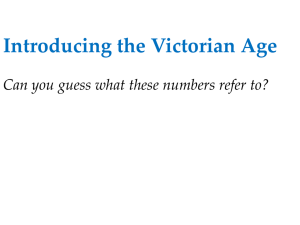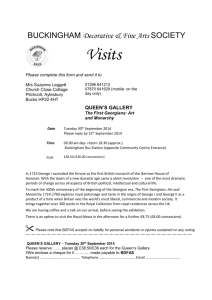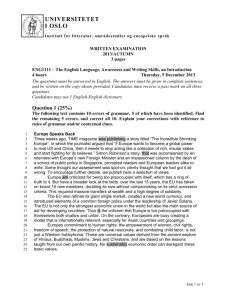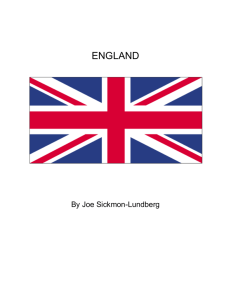Victorian Miniatures in the Collection of Her Majesty The Queen
advertisement
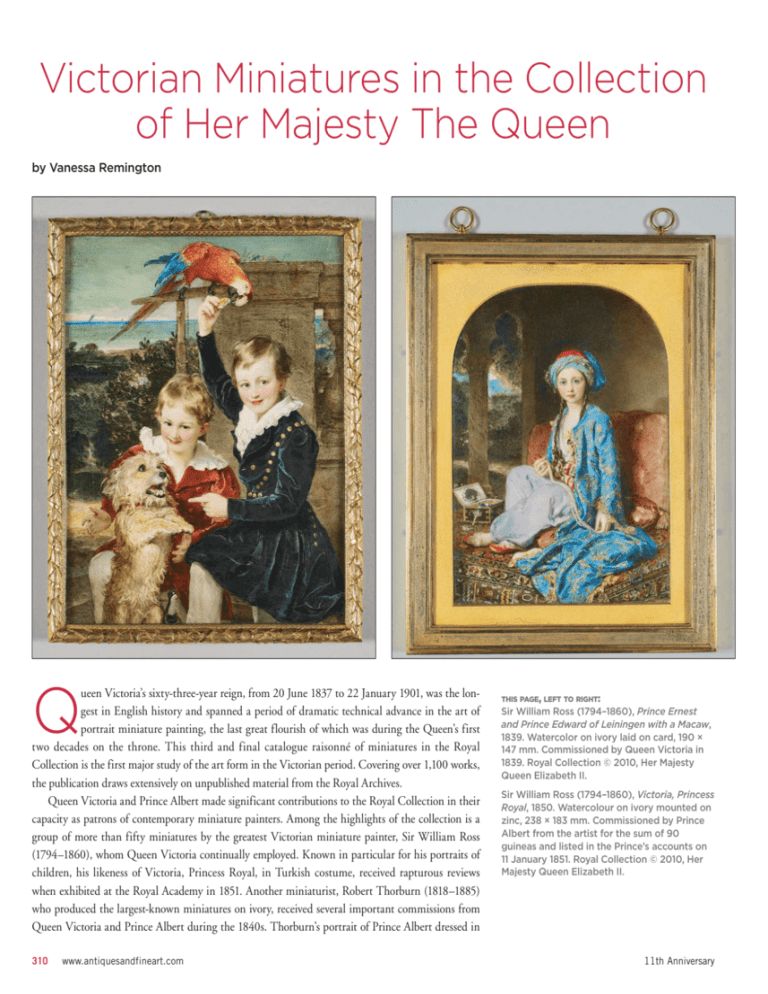
Victorian Miniatures in the Collection of Her Majesty The Queen by Vanessa Remington Q ueen Victoria’s sixty-three-year reign, from 20 June 1837 to 22 January 1901, was the longest in English history and spanned a period of dramatic technical advance in the art of portrait miniature painting, the last great flourish of which was during the Queen’s first two decades on the throne. This third and final catalogue raisonné of miniatures in the Royal Collection is the first major study of the art form in the Victorian period. Covering over 1,100 works, the publication draws extensively on unpublished material from the Royal Archives. Queen Victoria and Prince Albert made significant contributions to the Royal Collection in their capacity as patrons of contemporary miniature painters. Among the highlights of the collection is a group of more than fifty miniatures by the greatest Victorian miniature painter, Sir William Ross (1794–1860), whom Queen Victoria continually employed. Known in particular for his portraits of children, his likeness of Victoria, Princess Royal, in Turkish costume, received rapturous reviews when exhibited at the Royal Academy in 1851. Another miniaturist, Robert Thorburn (1818–1885) who produced the largest-known miniatures on ivory, received several important commissions from Queen Victoria and Prince Albert during the 1840s. Thorburn’s portrait of Prince Albert dressed in 310 www.antiquesandfineart.com THIS PAGE, LEFT TO RIGHT: Sir William Ross (1794–1860), Prince Ernest and Prince Edward of Leiningen with a Macaw, 1839. Watercolor on ivory laid on card, 190 × 147 mm. Commissioned by Queen Victoria in 1839. Royal Collection © 2010, Her Majesty Queen Elizabeth II. Sir William Ross (1794–1860), Victoria, Princess Royal, 1850. Watercolour on ivory mounted on zinc, 238 × 183 mm. Commissioned by Prince Albert from the artist for the sum of 90 guineas and listed in the Prince’s accounts on 11 January 1851. Royal Collection © 2010, Her Majesty Queen Elizabeth II. 11th Anniversary THIS PAGE, LEFT TO RIGHT: William Essex (1784–1869), Victoria, Princess Royal, 1841. Enamel, shaped around the contour of the head and shoulders of the Princess Royal, 28 × 24 mm. Commissioned by Prince Albert for 30 guineas on 26 November 1841; given to the Empress Frederick by Queen Victoria but at her request returned to the Royal Collection after her death. Royal Collection © 2010, Her Majesty Queen Elizabeth II. Reginald Easton (1807–1892), Alamaiou, son of Theodore Emperor of Abyssinia, 1868. Watercolour on ivory laid on the original backing card, 95 × 80 mm. Painted at Osborne House for Queen Victoria; her payment of 10 guineas to Easton is recorded in the accounts on 25 September 1868. Royal Collection © 2010, Her Majesty Queen Elizabeth II. armour as a medieval knight contributed to the popular romanticised image of the Prince Consort following his early death in 1861. Queen Victoria recognized the vital role miniatures played in overcoming distance, sustaining affections, and maintaining the contacts she so valued. She appreciated the traditional function of the miniature as a treasured, private token of love and loss within the close family, while also distributing miniatures as gifts to favoured courtiers and to foreign rulers. During their twenty-one years of marriage she gave Prince Albert numerous miniatures of herself, their children, and their shared SaxeCoburg relations to celebrate Christmases, birthdays, and wedding anniversaries. Very often miniatures given to the Queen by Prince Albert were incorporated into pieces of jewellery, sometimes of his own design. Following his premature death the wearing of miniatures of the Prince took on a central role in the process of sustained grieving as Queen Victoria sought to keep his image ever present. 2011 Victorian Miniatures in the Collection of Her Majesty The Queen reveals the role that this intimate art form played at Queen Victoria’s court and its survival in the face of competition from the fledgling art of photography. For the first time, miniatures are brought together with their original documentation, including the critiques and commentaries so often provided by Queen Victoria in her journal and correspondence, giving new insight into the lives of some of the leading painters of the day and providing a unique examination of the Victorian portrait miniature. For information on Victorian Miniatures in the Collection of Her Majesty the Queen (688 pages, 1,200 color ills.) visit www.royalcollection.org.uk. Ms. Remington will be speaking at the Winter Antiques Show, January 26, 2011, followed by a book signing in exhibitor Elle Shushan’s booth. Vanessa Remington is an assistant curator of paintings at the Royal Collection and a specialist in portrait miniatures. Antiques & Fine Art 311

